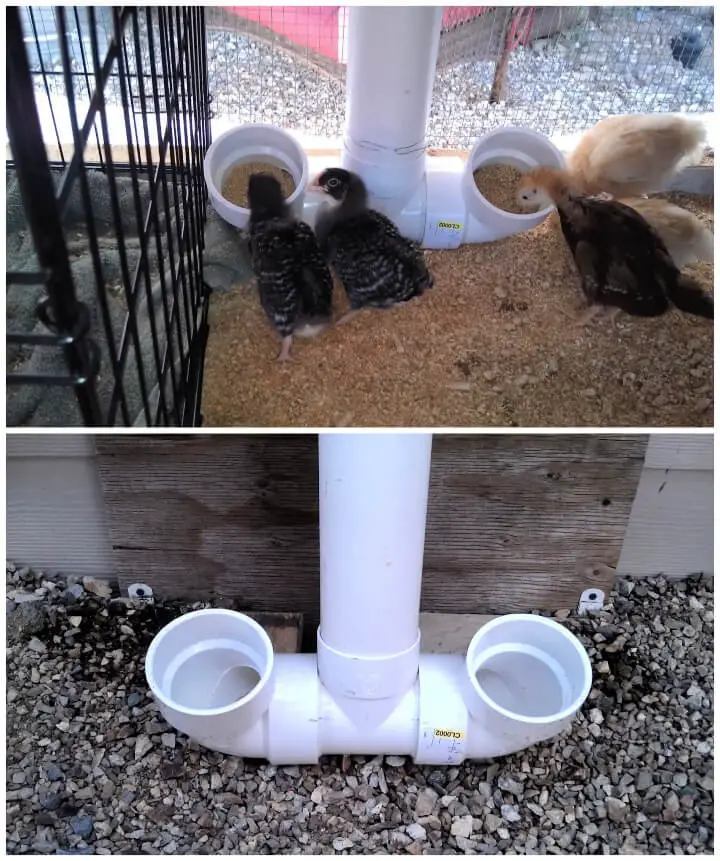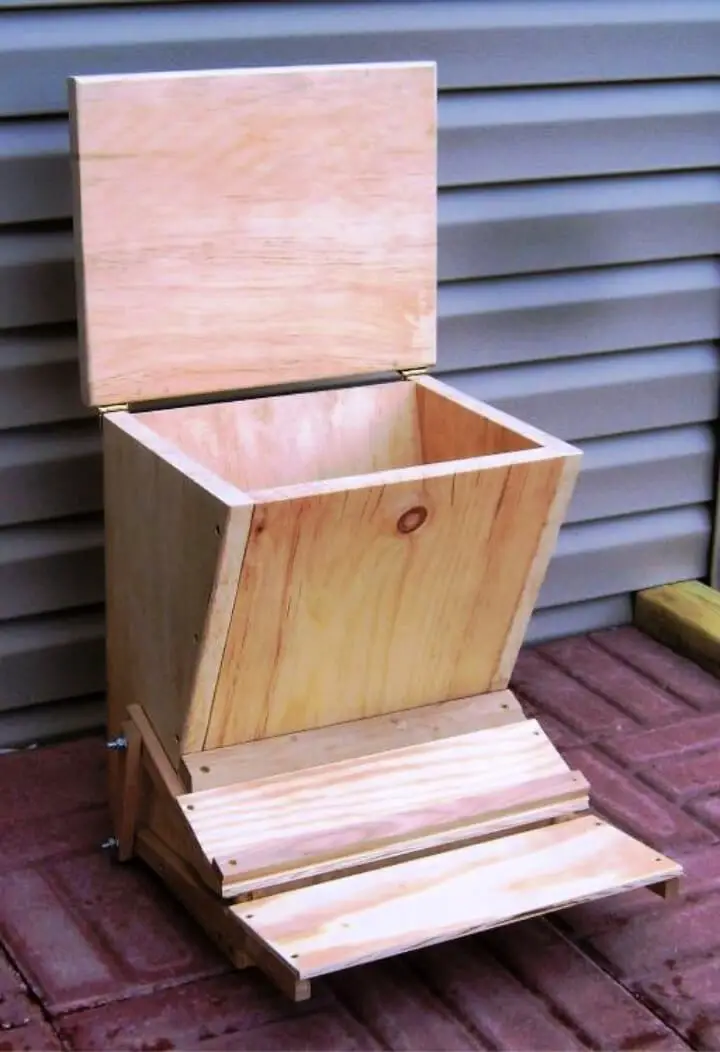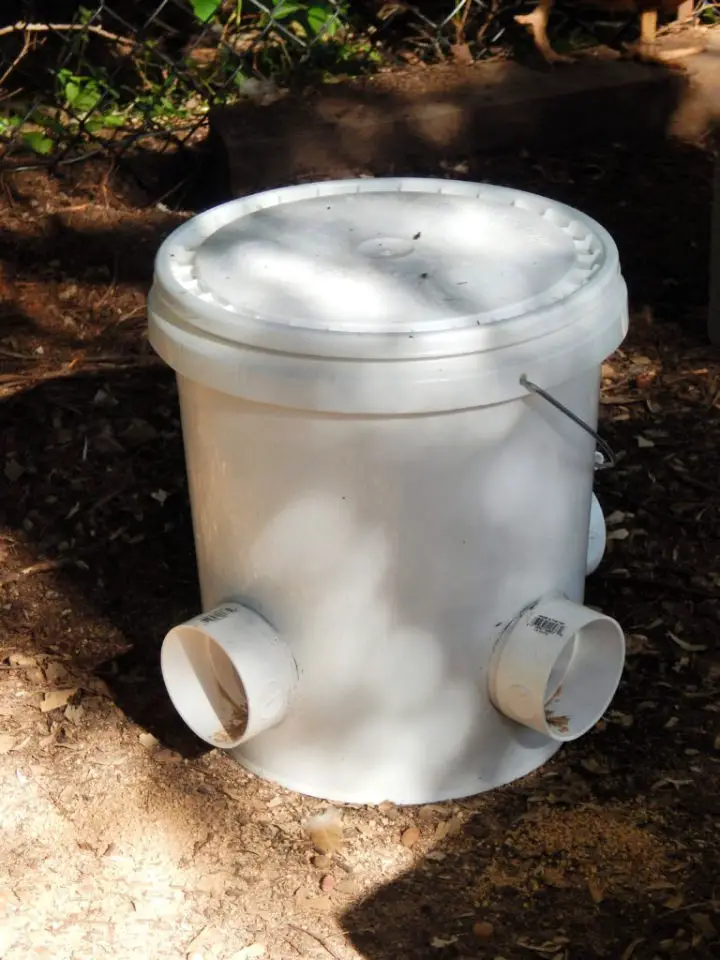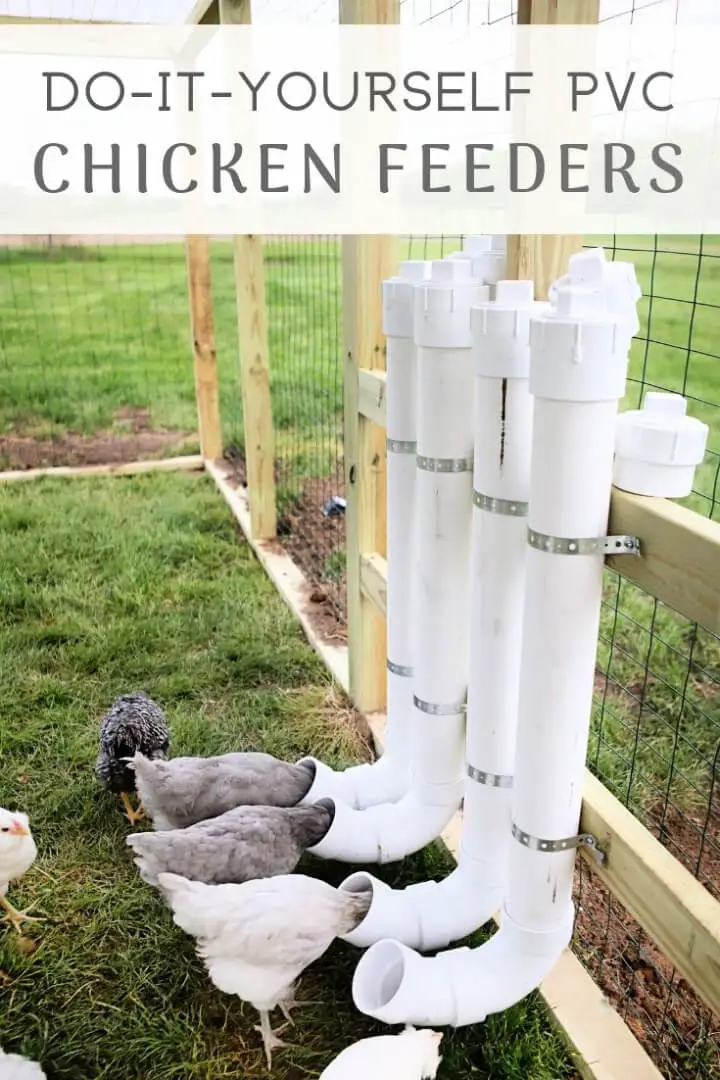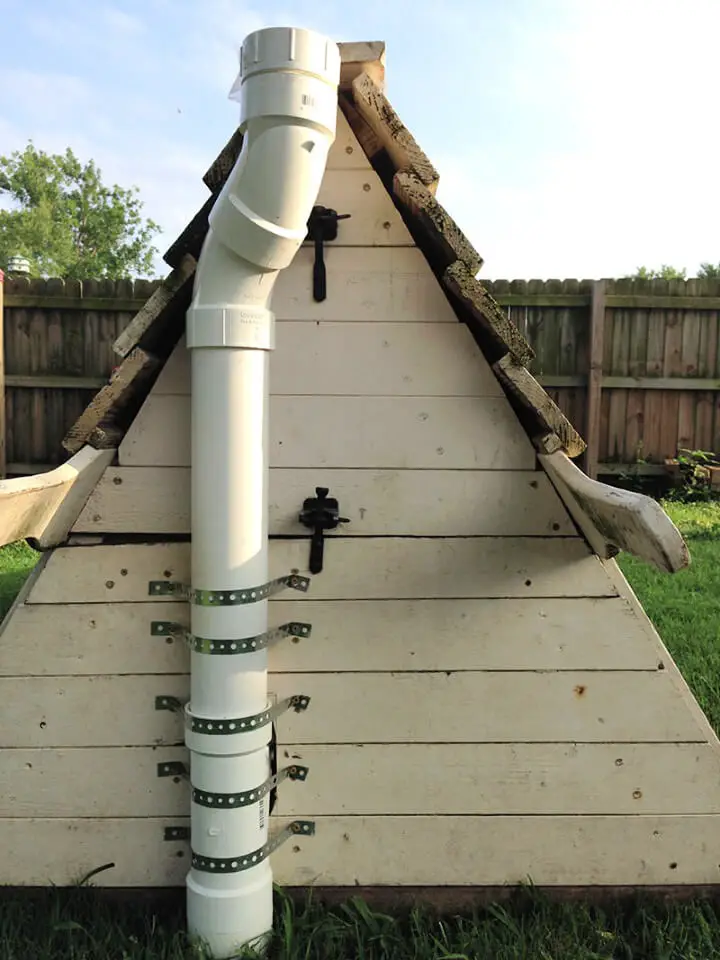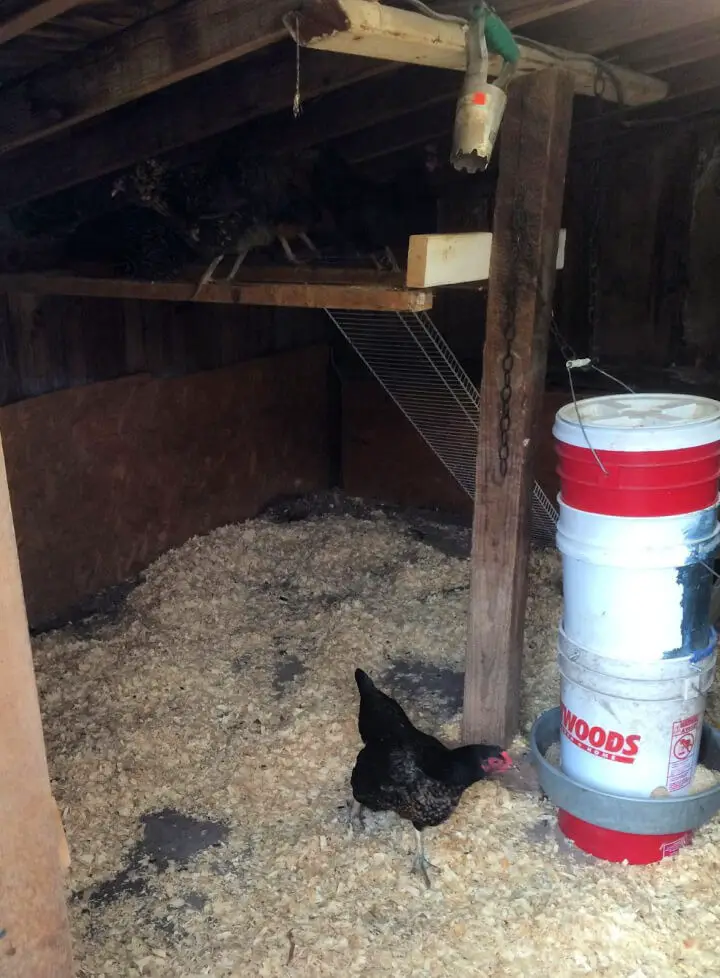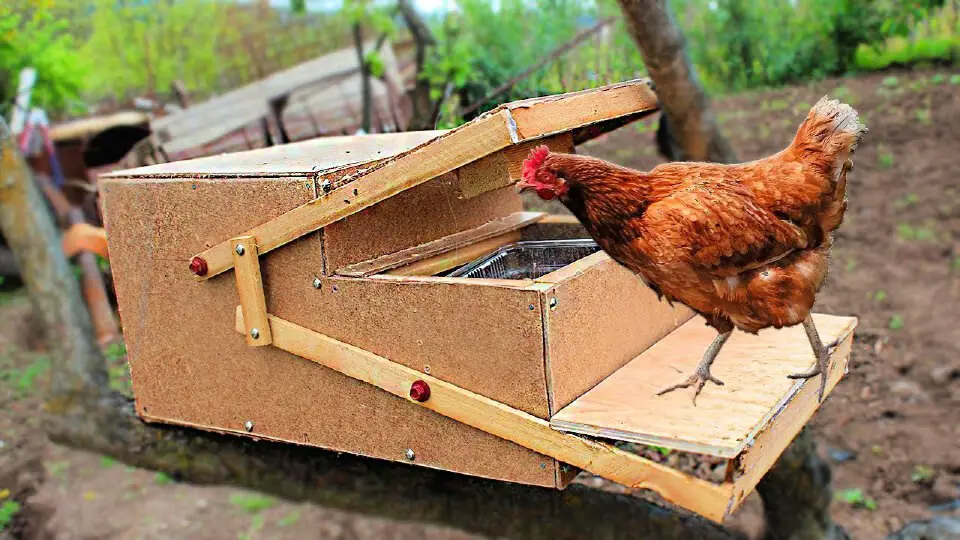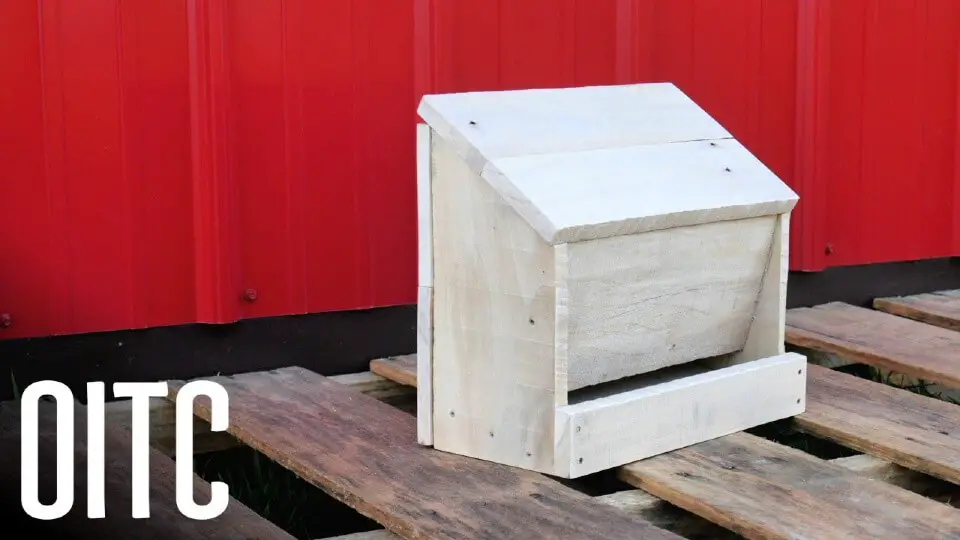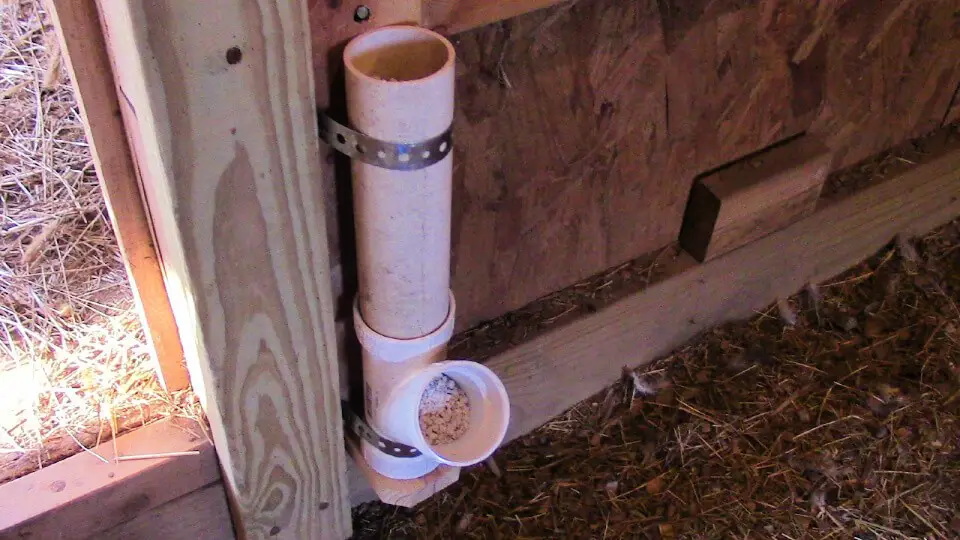
Creating a custom DIY chicken feeder can be a fulfilling project that not only saves you money but also caters to the unique needs of your backyard chickens. With 20 homemade PVC chicken feeder ideas, you’ll have a wide range of options to suit any coop size and feeding requirement. These innovative feeders offer a practical solution to daily feeding routines while injecting a personal touch into your chicken care practices.
The decision to craft a homemade feeder stems from the desire for a more efficient, cost-effective, and tailored feeding solution. Not only do these PVC chicken feeders reduce waste, but they’re also simple to make and can be adapted for both pellets and grain. By choosing to DIY, you gain insight into the construction process, allowing for easy troubleshooting and maintenance. With this guide, you’ll learn step-by-step instructions that will help you create a feeder tailored to your flock’s specific needs.
Why DIY Chicken Feeders?
When it comes to caring for your backyard chickens, making your own chicken feeder is an excellent DIY project that offers numerous benefits. Not only does it save you money, but it also provides the flexibility to customize the design and size of the feeder to suit your flock’s specific needs. One of the primary advantages of building your own feeder is its cost-effectiveness. By using materials you likely already have at home, you can create a high-quality feeder without breaking the bank. Another significant benefit is the reduction in waste. Many DIY feeder designs focus on minimizing feed spillage, which not only saves you money but also keeps your coop clean and reduces the attraction of pests. Additionally, homemade feeders can be designed to deter rodents and wild birds from stealing your chickens’ food, ensuring that it’s always available for them. When you construct a feeder yourself, you can ensure it’s durable and weather-resistant, lasting longer than some commercial options. Perhaps most importantly, building a feeder can be a highly enjoyable and fulfilling project, providing a sense of accomplishment and a closer connection to your chickens’ care and wellbeing.
How to Make a Chicken Feeder
Discovering the joys of raising chickens can be incredibly fulfilling, with fresh eggs and engaging companionship being just two of the many rewards. However, one common challenge that can quickly add up in terms of time and resources is feed waste. Fortunately, a simple and budget-friendly solution exists for minimizing this issue, inspired by The Provident Prepper’s practical approach. By repurposing readily available materials, you can create an efficient and cost-effective chicken feeder that will help keep your flock happy and healthy.
Materials Needed
To create the necessary components, you’ll need a few materials. Start by gathering a 10-foot length of 3-inch PVC pipe, along with two 3-inch PVC 90-degree elbows and two 3-inch PVC 45-degree elbows. Additionally, procure three 3-inch PVC caps to secure the ends of the pipe. For cutting the pipe to size, you’ll require either a PVC cutter or a handsaw. To prevent any unwanted movement during installation, consider investing in strap hangers or plumber’s tape for securing the components together. While not entirely necessary, having a funnel on hand can make filling the components much easier.
Step 1: Cutting the PVC Pipe
To minimize material waste when working with a 10-foot PVC pipe, consider dividing it into three equal sections of approximately 3 feet 4 inches each. If you lack the necessary cutting tools or prefer not to DIY, most hardware stores typically offer cutting services for this type of project.
Step 2: Assembling the Feeder
When preparing to attach the 90-degree elbow that forms the feeder’s base, select the end of the PVC pipe where this connection will take place. Ensure a secure fit by pressing the pieces together firmly; given the potential need for future disassembly, avoid gluing these parts together.
Step 3: Adding the Feed Dispenser
As you prepare to connect the other end of the PVC pipe, begin by attaching a 45-degree elbow fitting. This crucial component ensures that the feed flows smoothly and efficiently into the pipe, minimizing any potential excess spillage. To secure the joint, apply gentle pressure to press fit the pieces together, just as you did in previous steps.
Step 4: Securing the Feeder
To maintain a clean and pest-free feeding environment, place a PVC cap on the top opening of your feeder to prevent rain and unwanted critters from getting inside. For added stability and ease of access for your flock, secure the entire assembly to your chicken coop wall using strap hangers or plumber’s tape, making sure it remains steady and within reach.
Step 5: Filling and Maintenance
When it’s time to replenish your flock’s food supply, use a versatile tool like a funnel or, if you don’t have one handy, a flexible cup. Simply position the funnel over the feeder and pour in the chicken feed. To maintain a tidy operation and prevent waste, periodically inspect and refill as needed, guaranteeing your chickens always have access to their sustenance without creating an untidy environment.
Benefits of Your New Feeder
By utilizing this innovative system, you’ll not only reduce waste in your chicken’s feed but also save a substantial amount of money in the long run. Furthermore, it maintains a spotless and hygienic feeding area, allowing you to prioritize the well-being of your feathered friends. The design also makes it effortless to refill and clean the feeding station, creating an environment that fosters optimal health for your chickens.
Common Questions
You have complete control over the feeder size, allowing you to tailor its length to fit comfortably within your designated space and accommodate the number of chickens you’re raising. In fact, adjusting the feeder’s dimensions is a straightforward process that can greatly enhance your backyard flock’s overall experience.In terms of securing the feeder, it’s crucial to keep it above ground. By elevating the feeder, you’ll effectively deter rodents and pests from accessing the feed, ensuring a cleaner environment for your chickens to dine in. This simple yet effective design element will make all the difference in maintaining a healthy and happy flock.
Video Tutorial
For a comprehensive and interactive understanding of constructing a chicken feeder, I recommend watching the step-by-step video tutorial by The Provident Prepper. This visual guide serves as a valuable complement to this written guide, providing a hands-on demonstration that deepens your comprehension of the process. By following these steps, you’ll not only create an effective feeding solution for your chickens but also contribute to a more sustainable and cost-effective poultry-keeping practice.
FAQs On DIY Chicken Feeder
When embarking on the adventure of crafting a homemade chicken feeder, it’s natural to encounter uncertainties. To simplify this process, we’ve gathered the most frequently asked questions, providing a comprehensive guide to walk you through each step, ultimately leading to a seamless DIY experience and a successful outcome.
What materials are best for a DIY chicken feeder?
When it comes to selecting materials for a DIY bird feeder, you have a variety of options at your disposal. PVC pipes, buckets, and wood are all common choices, each with its own unique characteristics that make them suitable for specific designs or personal preferences. The versatility of PVC and buckets, in particular, lies in their ease of use, durability, and ability to withstand the elements, making them a popular choice among DIY enthusiasts.
How can I make my chicken feeder rodent-proof?
To effectively deter rodents from accessing your chicken’s feeder, consider implementing a few simple modifications. By designing the feeder’s entry points to be only large enough for chickens themselves, you can significantly reduce the likelihood of unwanted visitors. A treadle feeder setup, where the feeding port opens in response to the weight of a chicken, can be particularly effective at keeping rodents out. Additionally, make it a habit to regularly clean up any spills around the feeder, as this will help eliminate potential food sources and discourage rodents from lingering in the area.
Is it cheaper to build my own chicken feeder?
While constructing your own chicken feeder may not always be the most budget-friendly option, it can indeed prove to be a cost-effective alternative in many cases. This is particularly true when you’re working with existing materials on hand or opting for low-cost alternatives like PVC pipes or repurposed containers. By leveraging what you already have, you can create a functional feeder without breaking the bank.
How do I prevent feed from getting wet in an outdoor feeder?
When designing your bird feeder, consider incorporating a protective feature that guards against rainfall. A simple yet effective approach is to build the feeder with a sloping surface, allowing any precipitation to flow effortlessly away from the feeding area, thereby preventing moisture accumulation. Alternatively, you can opt for a feeder featuring a removable lid or cover, which can be easily lifted to refill and maintain a dry environment within. Moreover, using durable materials such as PVC piping can also contribute to the longevity of your bird feeder by resisting damage caused by weathering elements.
Can DIY chicken feeders be used for both pellets and grain?
While many DIY chicken feeders are versatile enough to handle a variety of feed types, including pellets and grain, some minor tweaks may be necessary to optimize the feeder’s performance. This could involve adjusting the size of the feed ports or the angle of the feeding tray to ensure that the feed flows smoothly and efficiently.
How often should I refill my DIY chicken feeder?
When it comes to chicken feeding, a well-designed feeder is crucial. The key is finding a balance between providing enough food for your flock and minimizing waste. A good rule of thumb is to design your feeder to hold at least 2-3 days’ worth of feed, ensuring you don’t overdo it but also aren’t left scrambling to refill every day. This sweet spot will keep your chickens happy and healthy while keeping maintenance to a minimum.
Can I make a mobile chicken feeder?
When implementing a rotational grazing strategy, a portable and practical chicken feeder is a game-changer. Opting for lightweight yet durable materials such as PVC pipes or small buckets ensures the feeder can withstand regular movement without compromising on functionality.
How can I keep my DIY chicken feeder clean?
When designing your chicken feeder, prioritize models that can be easily disassembled or have large openings, ensuring thorough cleaning access. A regular soap-and-water cleaning routine will help prevent mold and mildew buildup, ultimately promoting the health of your chickens. By addressing these common questions, you’re now well-prepared to create a practical, budget-friendly, and dependable feeder for your flock.
20 Homemade DIY Chicken Feeder Ideas: PVC Chicken Feeder
Transform your backyard into a thriving sanctuary for your feathered friends by harnessing the power of PVC to create 20 ingenious DIY homemade chicken feeder ideas. These creative solutions will not only keep your flock satisfied but also ensure a streamlined feeding process within your coop, allowing you to focus on providing optimal living conditions and nurturing their overall well-being.
DIY No-Spill Chicken Feeder
Upgrade your chicken care routine with a game-changing DIY No Spill Chicken Feeder, effortlessly constructed from readily available materials like PVC pipe and connectors. By implementing this simple yet ingenious design, you’ll not only eliminate unwanted pests attracted to spilled feed but also streamline the feeding process, keeping your coop cleaner and promoting better hygiene among your flock. This innovative feeder solution curbs waste while fostering a more peaceful morning experience for both you and your feathered friends.
Build a Treadle Chicken Feeder
Get creative with a DIY Treadle Chicken Feeder to save on chicken feed while keeping unwanted visitors at bay. The problem of wild birds stealing your chickens’ lunch is a common one, but this innovative solution lets only your flock enjoy their meals. By crafting a treadle feeder using readily available materials like plywood and basic hardware, you can reduce waste and pest risks without breaking the bank.
This straightforward guide will walk you through the process of building your own feeder, perfect for anyone looking to optimize their chicken-keeping experience. With step-by-step instructions and accompanying videos, you’ll be well on your way to creating a feeder that ensures food is solely for your feathered friends.
PVC Chicken Feeder
Create a low-maintenance and mess-free backyard chicken feeding experience with a DIY PVC chicken feeder that’s surprisingly easy to construct. By utilizing simple plumbing components and design insights from fellow chicken enthusiasts, this innovative project eliminates the hassle of wasted feed or dirty feeders. For a comprehensive guide including a shopping list, assembly instructions, and expert tips, head over to Backyard Chicken Lady for a seamless transition into your streamlined chicken care routine.
How to Make PVC Chicken Feeder
Transform your chicken care routine with a simple yet effective homemade PVC chicken feeder. By opting for this DIY solution, you’ll not only reduce waste and save time on refills but also ensure your birds always have access to fresh feed. The Instructables tutorial provides a straightforward guide to building your own feeder, perfect for incorporating into your chicken coop setup. With its sturdy and long-lasting design, this accessory will elevate the overall well-being of your flock, leading to a happier and healthier group of birds.
Less-Waste Chicken Feeder
Transforming chicken feeding into an eco-friendly endeavor has never been easier! By constructing a custom feeder using readily available materials from your local home improvement store, you can significantly reduce waste and safeguard your chickens’ food from the elements. This budget-friendly DIY project is not only sustainable but also a thoughtful gesture towards your feathered friends. For a comprehensive guide on crafting this practical solution, visit OpenCoop.
Automatic Chicken Feeder
Take the first step towards revolutionizing your poultry care routine with a DIY solution that’s both practical and effective! This comprehensive guide will walk you through the simple process of building an Automatic Chicken Feeder, specifically designed to cater to the needs of busy chicken enthusiasts. By streamlining the feeding process, this innovative feeder not only saves valuable time but also minimizes waste and ensures your flock remains well-fed and content. Ideal for those committed to making their backyard farming practice more efficient, sustainable, and enjoyable.
Make a Treadle Chicken Feeder
Discover the simplicity of crafting a dependable chicken feeder by following our straightforward plans. Designed specifically for backyard poultry enthusiasts, these step-by-step guides ensure you build a sturdy feeder that keeps feed dry and protected from pests. Using basic materials like cedar board and plywood, you’ll create a reliable feeding system that will keep your feathered friends happy and healthy. Get started on your DIY project today with our detailed instructions available at Woodworking Corner.
Bucket Chicken Feeder from A 5 Gallon Bucket
Revamp your chicken care routine by creating a DIY Bucket Chicken Feeder from a 5-gallon bucket. This innovative solution requires minimal tools and materials readily available at any hardware store, making it an affordable upgrade for small to medium-sized flocks.
This clever design prioritizes efficiency and cleanliness, minimizing daily maintenance tasks by keeping feed dry, organized, and easily accessible to your chickens – without the mess. Perfect for busy chicken enthusiasts, this feeder is a must-have addition to any coop. With step-by-step instructions available at werefarfromnormal.com, you can quickly and easily assemble your own DIY Bucket Chicken Feeder.
DIY Chicken Feeder Out of PVC Pipe
Want to reduce waste and maintain a spotless chicken coop? Look no further than this clever DIY Chicken Feeder guide! By transforming readily available PVC materials into a custom feeder, you’ll not only minimize mess but also guarantee your flock has constant access to their favorite snacks. Perfect for enthusiasts of high-quality feeds like Purina Organic Poultry Feed, this DIY project breathes new life into everyday items, yielding an efficient feeding system that’s as easy to assemble as it is effective in keeping your coop tidy and your chickens content.
Chicken Feeder from PVC
Transform your backyard poultry keeping with an innovative solution for homemade chicken feeders using PVC pipes. This cost-effective approach not only saves you money on chicken feed but also eliminates the risk of unwanted pests and wasted food. By repurposing simple materials like drain pipes, elbows, and caps, you can create a secure feeding system that keeps your chickens’ sustenance neatly stored and dry. Not only will this DIY project simplify your daily farm chores, but it will also ensure your feathered friends have access to clean and fresh food. For a comprehensive guide on constructing these feeders and more insightful farming tips, visit Sugar Maple Farmhouse.
Outdoor PVC Chicken Feeder
Crafting a DIY PVC chicken feeder is a straightforward process that requires minimal materials and tools. By following this guide, you can create a functional and cost-effective feeder that reduces waste and deterring wild birds. The project involves assembling the base using PVC pipes, attaching the pipe, and securing the feeder in place. Not only is this a simple DIY endeavor, but it also provides a practical solution for efficiently feeding your flock.
DIY Bucket Chick Feeder
Transform the task of feeding your growing chicks into an easy DIY project, eliminating the frustration of sold-out supplies. Instead, repurpose everyday household items to create a functional and budget-friendly feeding system. With just a few basic materials like a honey container, peanut butter lids, a mayo jar, an exacto knife, and a glue gun, you can construct a simple yet effective feeder and waterer. By making a few strategic cuts and applying some glue, you’ll be able to save money while keeping your chicks happy and healthy.
DIY No Fuss Chicken Feeder
When it comes to choosing the perfect chicken feeder for your backyard flock, it’s easy to feel overwhelmed by the numerous options available on the market. To help you make an informed decision, we’ve compiled a comprehensive guide that compares eight critical factors across seven popular feeders. From cost-effectiveness to pest prevention, our rankings will arm you with the knowledge you need to select a feeder that meets your chickens’ unique needs and preferences. By eliminating the guesswork and opting for a high-quality feeder, you’ll be able to provide your flock with a more enjoyable feeding experience. With our guide, you’ll gain a deeper understanding of what sets each feeder apart and how it can impact your poultry care. Whether you’re a seasoned chicken keeper or just starting out, this valuable resource is designed to help you make the best possible choice for your birds.
Build Your Own 2-Week Chicken Feeder
For chicken enthusiasts seeking a hassle-free way to maintain a consistent supply of feed without constant refills, the DIY 2-week chicken feeder from Hawk Hill is an innovative solution worth exploring. By repurposing simple materials like 5-gallon buckets and metal feed pans, this clever design can hold a full 50-pound bag of feed, effectively streamlining your feeding routine.
What’s more, this ingenious feeder boasts easy-to-follow instructions and minimal tool requirements, making it an accessible project for even the most novice DIY enthusiasts. Its thoughtful design also lifts to prevent messy bedding mix-ups, keeping your coop tidy and organized. Furthermore, its ability to keep feed clean and secure reduces waste and ensures a happy, healthy flock.
Cheap & Easy DIY Bulk Chicken Feeder
Create a budget-friendly and efficient way to feed your chickens by building a DIY bulk feeder using PVC pipes and a large container, just like RobBob’s Aquaponics & Backyard Farm suggests. With this simple yet effective solution, you can simplify the feeding process, reduce waste, and enjoy significant savings. For a step-by-step guide on how to make this project come together, click here.
Plywood Chicken Feeder

Imagine being able to effortlessly manage your flock without worrying about pesky rodents or other critters getting in the way. That’s precisely what our cutting-edge plywood chicken feeder offers – a cleverly designed boundary system that keeps unwanted visitors at bay, allowing you to focus on more important things, like collecting those fresh eggs. And it’s not just about keeping intruders out; this innovative feeder also helps minimize feed waste by ensuring only your chickens get to enjoy their meal. With our solution, you can bid farewell to the frustration of dealing with unwanted visitors and hello to a more streamlined, sustainable approach to chicken care.
Homemade Automatic Chicken Feeder
Transform your backyard into a haven for your feathered friends by crafting a homemade automatic chicken feeder that’s as easy to use as it is satisfying to build. This DIY endeavor caters to chicken enthusiasts of all levels, providing a reliable and mess-free solution for keeping your flock well-fed. For a more in-depth look at the process, consider consulting the instructional video from Clever Handyman Crafts and Tips. With this practical project, you’ll not only be supporting your birds’ nutritional needs but also fostering a deeper connection with them. Make the most of your chicken care routine by taking on this fun and rewarding challenge today!
Rustic Wood Chick Feeder from Pallets
Transforming pallet wood into a rustic wood chick feeder is a creative way to repurpose materials while adding a charming, vintage touch to your chicken care routine. This DIY guide showcases the process of transforming basic pallet wood into a functional feeder that emphasizes resourcefulness and creativity. Not only does this project provide a space-efficient way to keep your chicks well-fed, but it also marries practicality with rustic aesthetics. By following these steps, you can create an eco-friendly and cost-effective feeder that will be the perfect addition to your backyard or farm.
Easy DIY Chicken Grit Feeder
To keep your chickens’ health in top shape, try a simple DIY project that’s as easy as it is effective. A well-designed grit feeder can provide your flock with constant access to calcium, a crucial mineral for their overall well-being. By repurposing everyday materials like PVC pipes and scrap wood, you can create a customized feeder that meets the unique needs of your chickens. This practical solution is perfect for anyone looking to support their birds’ dietary requirements without breaking a sweat. Just follow along with our step-by-step video tutorial and start building your very own grit feeder today.
Build Your Own Chicken Feeder
Say hello to the ultimate convenience for chicken keepers! Our review of the Boomer & George Chicken Feeder reveals how it effortlessly eliminates daily feeding chores. Constructed from durable, rot-resistant Chinese fir wood, its natural finish seamlessly integrates with your coop’s aesthetic. The feeder’s thoughtful design features a trough area and angled interior, allowing for efficient feeding and minimizing waste. A locking lid ensures spills are a thing of the past, freeing you up to focus on more enjoyable aspects of chicken keeping. With this game-changing feeder from Hayneedle, you’ll enjoy a tidier coop and more time to appreciate your feathered friends.
Conclusion:
As you conclude your exploration of 20 innovative DIY chicken feeder ideas, including the PVC chicken feeder, you’re poised to unlock a new world of possibilities for poultry enthusiasts seeking to elevate their feeding strategies. By embracing creative problem-solving and resourcefulness, you’ll not only tailor your flock’s feeding needs but also champion sustainability and cost-effectiveness. The journey from gathering materials to designing and maintaining your very own homemade PVC chicken feeder is a testament to the power of innovation and self-sufficiency. With every step, you’ll ensure your chickens’ constant access to nourishment while minimizing waste. Moreover, this DIY approach empowers poultry keepers to customize their feeders for optimal rodent-proofing and weather resistance, ultimately enriching their overall poultry care experience.



